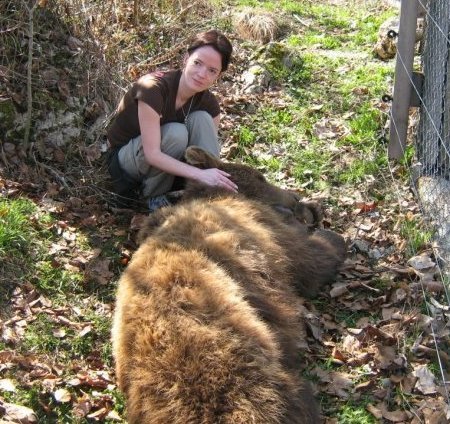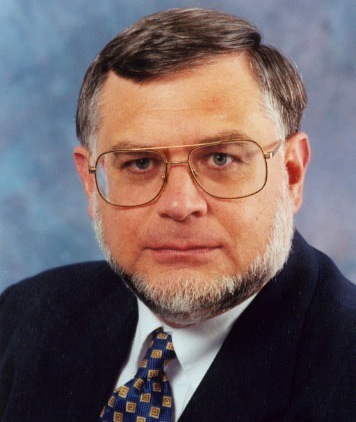Marc Abrahams's Blog, page 396
June 17, 2014
Watson and Crick and Pippa Middleton’s bottom
A three-page study called “And Bringing Up the Rear: Pippa Middleton, Her Derrière and Celebrity“, written by a Birkbeck, University of London scholar, Janet McCabe, marks Britain’s instant new status as top dog and intellectual driver of an entire academic field. It is, in that respect, as mentally electrifying as was a one-page study called A Structure for Deoxyribose Nucleic Acid, published in 1953 by a pair of then-obscure University of Cambridge scholars named James Watson and Francis Crick.…
—So begins this month’s Improbable Research column in The Guardian.
Here’s video of Pippa Middleton’s first big starring appearance:

June 16, 2014
Ashes to ashes to fireworks: going out with a bang (new patent)
“It is an object of the present invention to provide a practical and affordable device to disperse cremated remains in a special and honorary manner.”
- explains inventor Wallace N. Brown, of Maricopa, AZ, USA, in a newly issued patent, entitled : Aerial disposal and dispersal of cremated remains going out with a bang. The ‘honorary manner’ features mortar rounds (with accompanying ashes) which can be fired off the back of a flatbed truck.
“
Upon a loved one’s death, family and friends gather to discuss the departed one’s interests and decide an appropriate area over which to release the remains. A family of an avid fisherman may disperse his remains over his favorite fishing hole or lake. A family may honor a loved one’s love of animals by dispersing their remains over a wildlife preserve. The cremated remains then are appropriately packaged in the biodegradable container and an aerial disposal and dispersal of cremated remains device or a single mortar device is dispatched to the designated location. Family members and loved ones may participate in launching remains and holding an onsite service for the departed member. At an appointed time, the remains are loaded into one or more mortar launchers mounted on the back of a mobile unit, be it a vehicle or other mobile device, and propelled into the sky. When an appropriate altitude is reached, the explosive device is activated and explodes, causing the ashen remains to disintegrate and cover an expansive area with the ash. The loved ones may feel that the spirit of the departed lingers in that area, allowing surviving family and friends to enjoy the comfort of having a part of the loved one physically and figuratively all around them.”

June 15, 2014
First scientific report of fellatio in captive brown bears
The Ig Nobel Prize-winning study “Fellatio by Fruit Bats Prolongs Copulation Time,” [by Min Tan, Gareth Jones, Guangjian Zhu, Jianping Ye, Tiyu Hong, Shanyi Zhou, Shuyi Zhang and Libiao Zhang, published in PLoS ONE, vol. 4, no. 10, e7595] is one of several intellectual forebears (another is a study by Ig Nobel Prize winner Frans de Waal) cited in a new study about fellatio in captive brown bears. Here’s a photo of lead author Agnieszka Sergiel with a captive bear:
The new study is:
“Fellatio in Captive Brown Bears: Evidence of long-term effects of suckling deprivation?” Agnieszka Sergiel, Robert Maślak, Andreas Zedrosser, Łukasz Paśko, David L. Garshelis, Slaven Reljić and Djuro Huber, Zoo Biology, epub June 4, 2014. The authors, at the Polish Academy of Sciences, the University of Wroclaw, Telemark University College, Bø, Norway, the University for Natural Resources and Life Sciences, Vienna, Austria, the Minnesota Department of Natural Resources, Grand Rapids, Minnesota, USA, and the University of Zagreb, Zagreb, Croatia, write:
“Here, we report on a case of two male brown bears, raised in captivity since being orphaned as cubs, which engaged in recurrent fellatio multiple times per day until at least 10 years old. The roles of provider and receiver in the act remained unchanged, and the behavior itself became highly ritualized. The provider always initiated the contact involving vigorous penile sucking that appeared to result in ejaculation. We suggest that the behavior began as a result of early deprivation of maternal suckling, and persisted through life, possibly because it remained satisfying for both individuals. This constitutes the first descriptive report of fellatio in bears, and suggests that some bears may suffer lifelong behavioral consequences from being orphaned at an early age.”
Jason Goldman writes an appreciation of the discovery, in Io9.
(Thanks to investigator Irene Delse for bringing this to our attention.)

Reducing Toilet Flush Noise in Adjacent Offices
The science of acoustics offers many challenges, some of which relate to toilets. For example:
“An experience reducing toilet flushing noise reaching adjacent offices,” Noral D. Stewart [pictured here] (Stewart Acoustical Consultants, Raleigh, NC), Acoustical Society of America – 161st Meeting Lay Language Papers, Presented Thursday afternoon, May 26, 2011, 161st ASA Meeting, Seattle, Washington, Popular version of paper 4pAAb4. (Thanks to Jennifer Ouellette for bringing this to our attention.) The author reports:
“An office building was experiencing loud toilet flushing noise in a row of five offices adjacent to rest rooms on seven floors of the building. In each row of five offices, the three in the middle were immediately adjacent to the rest rooms. The middle office shared a wall with both the men’s and women’s rest rooms. The toilets were a new design for very low water consumption, 1.2 gallon per flush.”

June 14, 2014
Some observations on the mental powers of spiders
Behold, from 1887, a disquisition on certain powers of certain multi-legged individuals:
“Some observations on the mental powers of spiders,” George W. and Elizabeth G. Peckham, Journal of Morphology, vol. 1, no. 2 (1887): 383-419. The Peckhams say, early on:
“So, also, we have found that to learn anything of the mental processes of spiders the way is long and beset with difficulties. To use the words of Ribot: ‘Many of these investigations, we shall see, pertain to very modest questions, and it is probable that the partisans of the old psychology will find the work too great for results so small. But those who give allegiance to the methods of the positive sciences will not complain of this. They know how much effort the smallest questions require j how the solution of small questions leads on to the solution of great ones, and how barren of results it is to discuss great problems before the small ones have been solved.’”
Here is one detail from the study, the route used by one spider on one occasion in finding a cocoon:
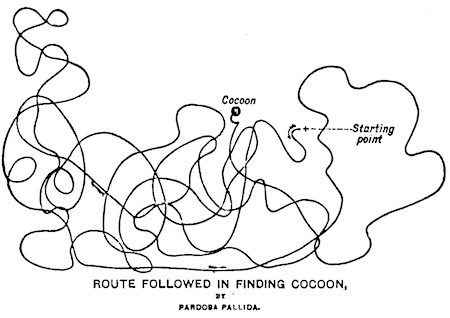

June 13, 2014
Wombat Crossing
 Question : How do bare-nosed wombats cross roads?
Question : How do bare-nosed wombats cross roads?
Answer : ‘Bare-nosed wombats (Vombatus ursinus) use drainage culverts to cross roads.’ (See: Australian Mammalogy, 2013, 35 , pp. 23–29.)
At least they do in this vicinity of Thunderbolt’s Way, near Nowendoc on the Northern Tableland, North-Eastern New South Wales, Australia, where researchers found that:
“The estimated probability of the occupancy/use of a culvert by a wombat was 0.46 ± 0.10.”
Sadly, not all bare-nosed wombats make use of drainage culverts – some choose the overground direct route, with occasionally unfortunate results.
“During the study period, we recorded 12 wombats killed by vehicles along Thunderbolt’s Way. Local residents reported higher mortality rates in the order of 4–5 wombats per week.”
Also see(s):
[1] Keith the Wombat
[2] The Northern Hairy-nosed Wombat, Lasiorhinus krefftii – of which it’s said that there are less than 200 individuals still surviving in the wild – can run short distances at speeds of up to 40 km/hr. [Source: The Wombat Foundation].

June 12, 2014
A Somewhat Scientific Risk Analysis of Risk Analysis’s Scientificness
Journalist Dan Vergano points out the disciplined approach, in this study, of using using risk analysis to analyze whether risk analysis is scientific:
“Is Risk Analysis Scientific?” Sven Ove Hansson [pictured here] and Terje Aven, Risk Analysis, epub June 11, 2014. The authors, at Royal Institute of Technology, Stockholm, Sweden and the University of Stavanger, Norway, explain:
“we use a model for risk analysis in which science is used as a base for decision making on risks, which covers the five elements evidence, knowledge base, broad risk evaluation, managerial review and judgment, and the decision; and that relates these elements to the domains experts and decisionmakers, and to the domains fact-based or value-based. We conclude that risk analysis is a scientific field of study, when understood as consisting primarily of (i) knowledge about risk-related phenomena, processes, events, etc., and (ii) concepts, theories, frameworks, approaches, principles, methods and models to understand, assess, characterize, communicate, and manage risk, in general and for specific applications (the instrumental part).”
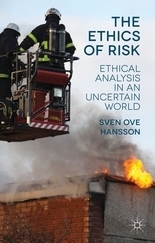 BONUS: Sven Ove Hansson also wrote the book The Ethics of Risk.
BONUS: Sven Ove Hansson also wrote the book The Ethics of Risk.
BONUS: The further adventures in ethics and risk of Sven Ove Hansson.

“This unholy war against oleaginous applications”, 1898
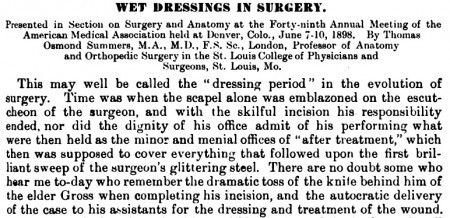
The 1898 meeting of the American Medical Association was held in Denver, Colorado in early June. One major address was on the topic of “Wet Dressings In Surgery“, delivered by Dr. Thomas Osmond Summers Jr. of St. Louis, son of the theologian and Confederate States almanac editor.
Dr. Summers reached such heights of eloquence, in his efforts to convince the audience to use oil-based surgical dressings, that it’s hard to imagine anyone disagreeing. He begins by remembering “the dramatic toss of the knife behind him of the elder Gross when completing his incision, and the autocratic delivery of the case to his assistants”.
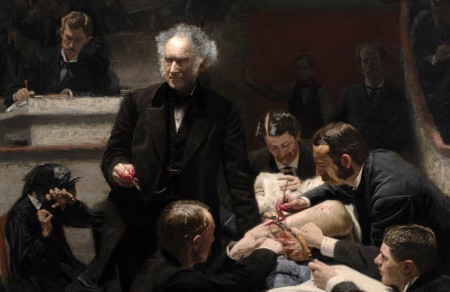
detail of The Gross Clinic (Thomas Eakins, 1875). The woman on the left may be recoiling from the behind-the-back knife tossing for which Dr. Gross was known.
* * *
Further excerpts:
It remained for Sir Joseph Lister to break the spell of this otium cum dignitate which was the bane of all surgical process, and teach the autocrats of the scalpel that surgery meant much more to the organism than the mere solution of continuity along anatomical lines — that this indeed was the avant courier of the real principle from which all the almost miraculous achievements of modern surgery had been evolved.
–
Professor Spence, almost on the edge of eternity, threw a well-poised Parthian lance at the rising genius of modern surgery.
–
We are glad to see this unholy war against oleaginous applications coming to an end, just as we should be also glad to see the phlebotomy pendulum point to the nadir. In surgical politics I am a middle-of-the-road man — In medio tutissimus ibis.
–
There are some things, however, that fashion cannot forbid, and this is one of them — like Banquo’s ghost “it will not down.” Long before science had thrown its searchlights over the dark field of biogenesis, experience had taught the steel-clad warrior the virtues of Gilead’s balm, and, from the shades of Olivet, where fell the tears of Him who came for the healing of the nations, man had learned to gather the oil for his wounded body.
–
The fulfilment of these conditions had been the aim of the surgical pharmacist from the time when the first coccus wriggled across the field of the microscope and gave its first exhibition to the scientific investigator of its dance of death within the organism of man.
–
It is about time we were looking around after labor-saving methods when we have to employ, at the simplest incisive operations, an extra attendant to wipe the sweat from our brows as the houri fans the Sultan’s heated cheek — though our attendants are not all houris, nor are our cheeks fired with the congestion of a lazy passion.
Imagine if surgeons had gone the other way, and kept the sweat-wiping attendants but actually used houris for the purpose. And lounged on divans eating grapes while performing surgery, like the sultans of yore. How different modern medicine would be.

detail of Le Harem (Fernand Cormon, c.1877). Not depicted: viewing gallery of medical students.
* * *
Follow Amboceptor on Twitter: @AmboceptorBlog

Elisabeth Guggenberger and Jakob Steixner jointly join Luxuriant Flowing Hair Club for Scientists (LFHCfS)
Elisabeth Guggenberger and Jakob Steixner have joined the Luxuriant Flowing Hair Club for Scientists (LFHCfS). They say:
E.G. is an astroseismologist at MPG in Göttingen, and J.S. a syntactician in Vienna. We have searched the Earth in vain for a language that has 400 words for “hair”. We have now joined forces to extend their quest to outer space.
Elisabeth Guggenberger, LFHCfS
Research fellow
Max Planck Institute for Solar System Research
Göttingen, Germany
Jakob Steixner, LFHCfS
Linguist
Department of German Studies
University of Vienna
Vienna, Austria
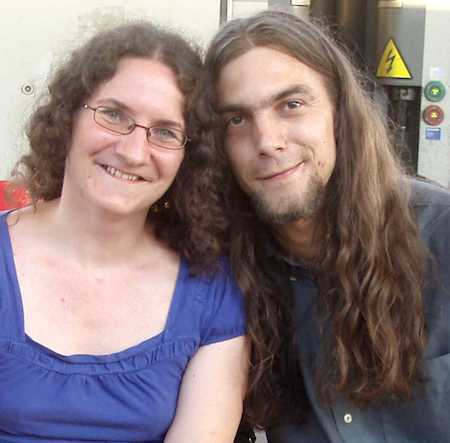

June 11, 2014
A number of eminently hairy and hairless scientists
The Luxuriant Flowing Hair Club for Scientists™ (LFHCfS) and its siblngs — the Luxuriant Former Hair Club for Scientists™ (LFHCfS), and the Luxuriant Facial Hair Club for Scientists™ (LFHCfS) — now have, collectively, 506 members: 317 male, 189 female.
This data may be of interest to someone, somewhere, some time. Maybe. If you know a scientist who would enjoy being a member, and who has the requisite qualifications, please encourage that delightful person to join the LFHCfS or the LFHCfS or the LFHCfS.
Here is a recent photo of Steven Pinker, the LFHCfS’s charter member:

Marc Abrahams's Blog
- Marc Abrahams's profile
- 14 followers


